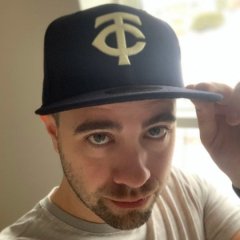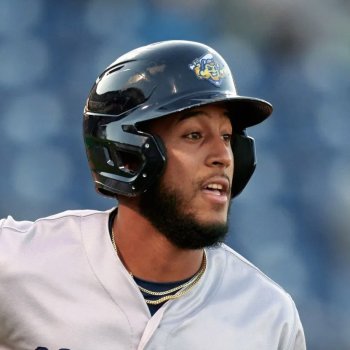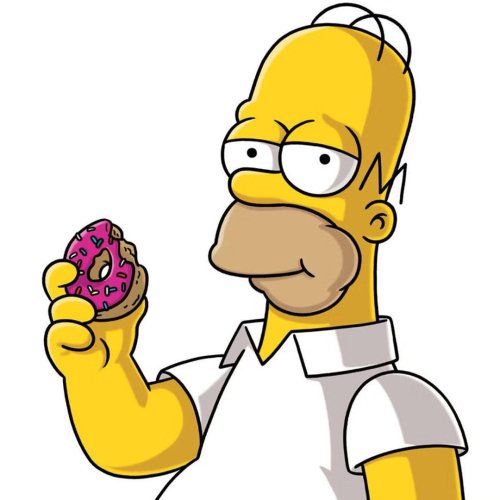
Twins Video
Aaron Gleeman penned a great piece for The Athletic last week addressing the team's hesitance to spend on pitching. This has been a trend for years, and now has become a glaring oddity, given the severe need for rotation help.
Unless they sign Carlos Rodón (unlikely), it is clear the Twins have actively decided to bow out of the high-end free agent pitching market this offseason. They had money in hand, and yet they let every frontline type fall off the board, with no signs of serious pursuit.
Why? Part of it undoubtedly ties to a fundamental aversion to risk, but I think there are deeper strategic underpinnings.
When you look at the organization's pitching pipeline, and the number of MLB-ready arms that need to be evaluated, it becomes a bit easier to understand the desire for extreme flexibility.
A pipeline ready to pay off
It's no secret: this front office was brought in to develop pitching. That was Cleveland's specialization when Derek Falvey was there, and it's been a calling card of successful mid-market organizations over the years.
There seems to be a sense that Falvey has fallen short in this regard, but we're judging an incomplete picture. Realistically it takes around five years or so to draft-and-develop a pitcher. This regime had a minor-league season wiped out by COVID in their fourth.
When you look at the proliferation of intriguing arms in the system that are approaching MLB-readiness, the plan appears to be on track following a jarring disruption.
All of these pitching prospects could feasibly be listed with an ETA of 2022:
- Jordan Balazovic, RHP (23 next season)
- Jhoan Duran, RHP (24)
- Josh Winder, RHP (25)
- Cole Sands, RHP (24)
- Chris Vallimont, RHP (25)
- Simeon Woods Richardson, RHP (21)
- Drew Strotman, RHP (25)
- Matt Canterino, RHP (24)
- Louie Varland, RHP (24)
When I say these are "interesting" pitching prospects, I don't mean, "These are guys with raw stuff who could put up numbers if they figure things out." They've all put up numbers. In some cases, ridiculous numbers. Most of them have reached the high minors, and nearly all are at an age where good prospects tend to take the big-league step.
Are the Twins viewing 2022 as a season to fully evaluate the quality of these pitchers and assess the strategy they've been developing for half a decade? It seems that way to me.
What to expect after the lockout
If this theory is correct, it doesn't mean the Twins are going to stand idly and let Dylan Bundy be their only pitching addition. None of the prospects mentioned above will be ready to go out of the gates, barring an unforeseen spring development. But it does mean they'll likely continue to avoid larger investments in pitchers, and the commitments those entail.
I wouldn't be surprised to see them sign one or two of the better mid-tier starters remaining – say, Zack Greinke or Michael Pineda – and then round out the staff with a bunch of hybrid starter/reliever types who can contribute bulk innings while offering some upside. I outlined what a model might look like in practice back in early November.
This model would be ideal for gradually bringing along young rookie starters in a controlled setting. You're not asking them to go out and throw six innings every fifth day, which none are physically built up to do. You're simply asking them to let loose and impact games. Maybe even win some games.
Is this a "rebuild"?
Falvey has bristled at the notion his team is headed for a rebuild in 2022. "I'm not using that word," he told reporters. Is he off base?
Even if the approach I've put forth above is accurate, I think it's fair to steer away from such a characterization. "Rebuild" implies having no real aspiration to contend, but rather starting anew with a long-term scope. The Twins aren't starting anew. They're sticking with the rebuilding plan that's already been in place throughout this front office's tenure.
These internally-developed arms were always going to the hold the key to Falvey and Thad Levine's vision for a sustainable winner. It's time to get a gauge on the validity of that vision.
A prototype to follow
Looking back through franchise history, we can find a pretty decent parallel for what a youthful takeover of the rotation could look like: the 2008 season.
That season, too, had the makings of a rebuild on the surface. Minnesota traded Johan Santana for prospects during the previous offseason, while letting Torii Hunter walk. They didn't go out and make any big moves in free agency.
The rotation ended up being led by Scott Baker, Nick Blackburn, Kevin Slowey, and Glen Perkins. Of those four, only Baker had more than 100 innings of major-league experience coming into the campaign. All were between 24 and 26 years old.
Ironically, the biggest misstep by the front office that year was signing Liván Hernández under the pretense that this young group of starters needed a veteran leader. Hernández posted a 5.48 ERA over 23 starts before being cut in August to make room for Francisco Liriano – another young starter who rounded out the youth-led rotation.
That youth-led rotation proved very capable. The Twins came within a game of a postseason berth, thanks in part to a solid offense led by a pair of MVP contenders in Justin Morneau and Joe Mauer.
The 2022 Twins offense, led by Byron Buxon, Jorge Polanco and others, will have a chance to win if they get any help from the pitching. Why can't that help come primarily from the internal pipeline? It's happened before.
A learning year
Despite my efforts here to understand and justify the front office's lack of aggressiveness on the pitching market, I can't deny that the youth movement plan is a long shot. For every example like the 2008 Twins, there are plenty more where inexperience doomed a young rotation.
But I'd argue that even in that scenario, the coming season can be a valuable one. They can throw numerous guys into the fire, take stock of what they've got, and assess their needs going forward more accurately.
Ideally, they'll add at least one more moderately good free agent starter and another impact arm via trade, so as to improve their odds and lessen the total reliance on unknowns. But as a general course of action, I don't hate the idea of letting the pipeline produce.
It's not the start of a rebuild. It's the summation of a rebuild that was initiated six years ago when Falvey and Levine first took over.
MORE FROM TWINS DAILY
— Order the Offseason Handbook
— Latest Twins coverage from our writers
— Recent Twins discussion in our forums
— Follow Twins Daily via Twitter, Facebook or email
MORE FROM TWINS DAILY
— Latest Twins coverage from our writers
— Recent Twins discussion in our forums
— Follow Twins Daily via Twitter, Facebook or email
— Become a Twins Daily Caretaker
- wabene, ToddlerHarmon, glunn and 16 others
-
 19
19







Recommended Comments
Join the conversation
You can post now and register later. If you have an account, sign in now to post with your account.
Note: Your post will require moderator approval before it will be visible.